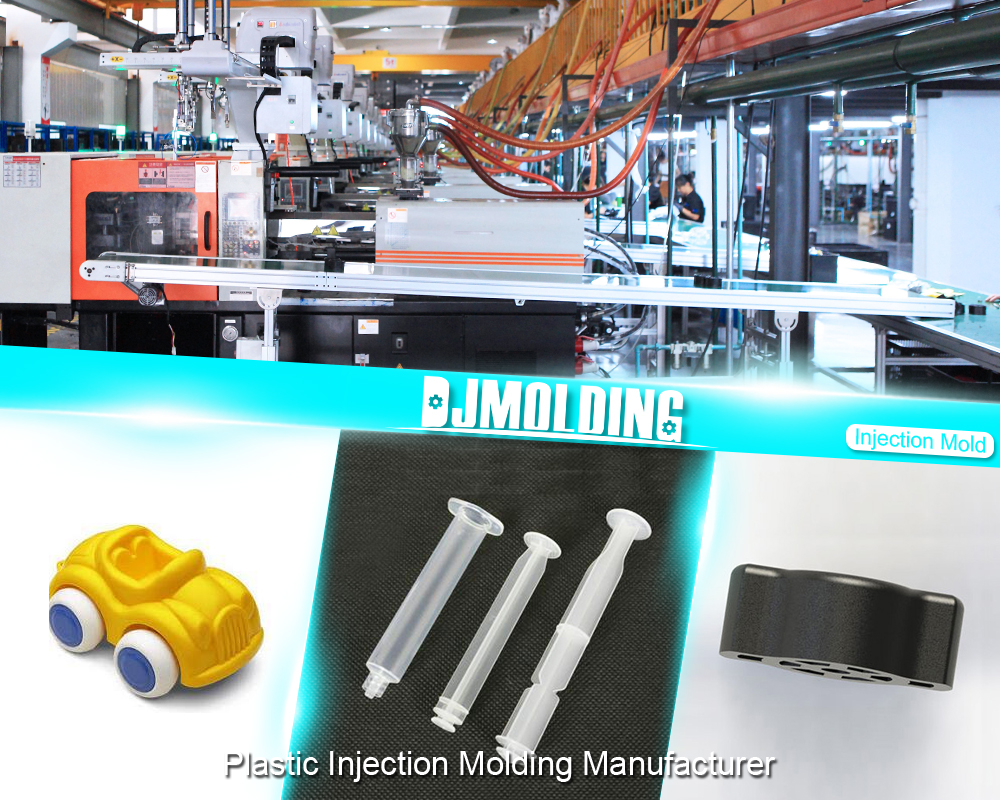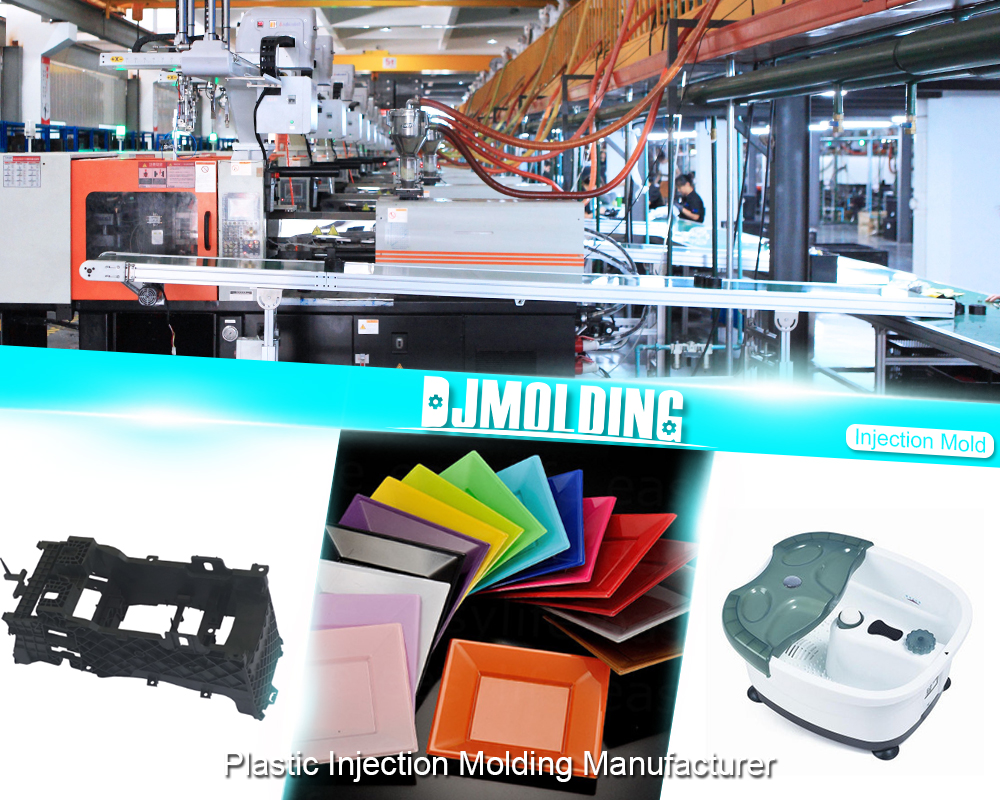- September 5, 2023
- Posted by: Plastic Injection Molding
- Category: Rapid Prototyping Service
How Injection Molding Rapid Prototyping Is Revolutionizing Manufacturing Processes
The manufacturing industry is constantly evolving, with new technologies emerging to streamline processes and increase efficiency. One such innovation is injection molding rapid prototyping, a process that allows for the creation of high-quality prototypes in a fraction of the time and cost of traditional methods. This game-changing technology is revolutionizing the manufacturing industry.
In this article, we’ll explore its benefits and applications. From medical devices to automotive parts, injection molding rapid prototyping is transforming the way products are made. Join us as we delve into this exciting technology and its impact on the manufacturing world.

What is Injection Molding Rapid Prototyping?
It involves the creation of a prototype using a mold and a thermoplastic material. The mold is designed to the exact specifications of the product, and the thermoplastic material is injected into the mold to create the prototype. This process is much faster than traditional prototyping methods, as it eliminates the need for manual labor and allows for the creation of multiple prototypes at once.
In comparison to traditional prototyping methods, injection molding rapid prototyping is much more efficient and cost-effective. Traditional prototyping methods involve the creation of a prototype by hand, which can take weeks or even months to complete. Injection molding rapid prototyping, on the other hand, can produce a prototype in a matter of days.
The Benefits of Injection Molding Rapid Prototyping
There are several benefits to using injection molding rapid prototyping in manufacturing processes. These benefits include faster production time, lower costs, improved product quality, and increased design flexibility.
Faster production time: It leads to creation of multiple prototypes at once, which significantly reduces the time it takes to produce a prototype. This means that products can be developed and brought to market much faster than with traditional prototyping methods.
Lower costs: Injection molding rapid prototyping is much more cost-effective than traditional prototyping methods. The process eliminates the need for manual labor, which reduces labor costs. Additionally, the use of thermoplastic materials is much cheaper than the materials used in traditional prototyping methods.
Improved product quality: It allows for the creation of high-quality prototypes that are more accurate and precise than those created using traditional prototyping methods. This means that products can be developed with greater precision and accuracy, which leads to better product quality.
Increased design flexibility: Injection molding rapid prototyping allows for greater design flexibility, as it is much easier to make changes to the mold than it is to make changes to a prototype created by hand. This means that designers can make changes to the product design quickly and easily, which leads to better product development.
How Injection Molding Rapid Prototyping Works
The injection molding rapid prototyping process involves several steps. First, a mold is created to the exact specifications of the product. Next, a thermoplastic material is injected into the mold. The mold is then cooled, and the prototype is removed from the mold.
The materials used in the injection molding rapid prototyping process include thermoplastic materials such as ABS, polycarbonate, and nylon. These materials are chosen for their durability, flexibility, and ease of use.
The Role of 3D Printing in Injection Molding Rapid Prototyping
3D printing plays a crucial role in injection molding rapid prototyping. 3D printing is used to create the mold for the prototype, which allows for greater design flexibility and faster production times.
The advantages of using 3D printing in the injection molding rapid prototyping process include greater accuracy and precision, faster production times, and lower costs. 3D printing allows for the creation of complex molds that would be difficult or impossible to create by hand, which leads to better product development.
The Impact of Injection Molding Rapid Prototyping on Product Development
Injection molding rapid prototyping has had a significant impact on product development. The process has allowed for faster product development, greater design flexibility, and improved product quality. Companies that use injection molding rapid prototyping are able to bring products to market much faster than their competitors, which gives them a significant advantage.
Examples of successful product development using injection molding rapid prototyping include the development of the iPhone, which was developed using the process. The iPhone was able to be developed and brought to market much faster than its competitors, which gave Apple a significant advantage in the market.
The Cost Savings of Injection Molding Rapid Prototyping
Injection molding rapid prototyping is much more cost-effective than traditional prototyping methods. The process eliminates the need for manual labor, which reduces labor costs. Additionally, the use of thermoplastic materials is much cheaper than the materials used in traditional prototyping methods.
Real-life examples of cost savings include the development of the Ford GT, which was developed using injection molding rapid prototyping. The use of the process allowed Ford to reduce the development time of the car from four years to just two years, which saved the company millions of dollars in development costs.
The Environmental Benefits of Injection Molding Rapid Prototyping
Injection molding rapid prototyping is more environmentally friendly than traditional prototyping methods. The process eliminates the need for manual labor, which reduces the amount of waste generated during the prototyping process. Additionally, the use of thermoplastic materials is much more environmentally friendly than the materials used in traditional prototyping methods. Examples of companies reducing their environmental impact through the use of injection molding rapid prototyping include Nike, which has reduced its waste by 30% by using the process.
The Future of Injection Molding Rapid Prototyping
The future of injection molding rapid prototyping looks bright. Advancements in technology are expected to make the process even more efficient and cost-effective. Additionally, the process is expected to become more widely adopted as companies look for ways to reduce costs and improve product development.
Potential advancements in technology include the use of artificial intelligence to optimize the injection molding process and the development of new materials that are even more durable and flexible than current thermoplastic materials.

Final Thoughts
Companies that embrace injection molding rapid prototyping are able to bring products to market faster than their competitors, which gives them a significant advantage. Additionally, the process is more environmentally friendly than traditional prototyping methods, which is an important consideration for companies looking to reduce their environmental impact. In conclusion, companies that want to remain competitive in today’s fast-paced market should consider embracing injection molding rapid prototyping in their manufacturing processes.
For more about how injection molding rapid prototyping is revolutionizing manufacturing processes,you can pay a visit to Djmolding at https://www.djmolding.com/rapid-prototyping-service/ for more info.
Article Original From: https://www.djmolding.com/how-injection-molding-rapid-prototyping-is-revolutionizing-manufacturing-processes/
